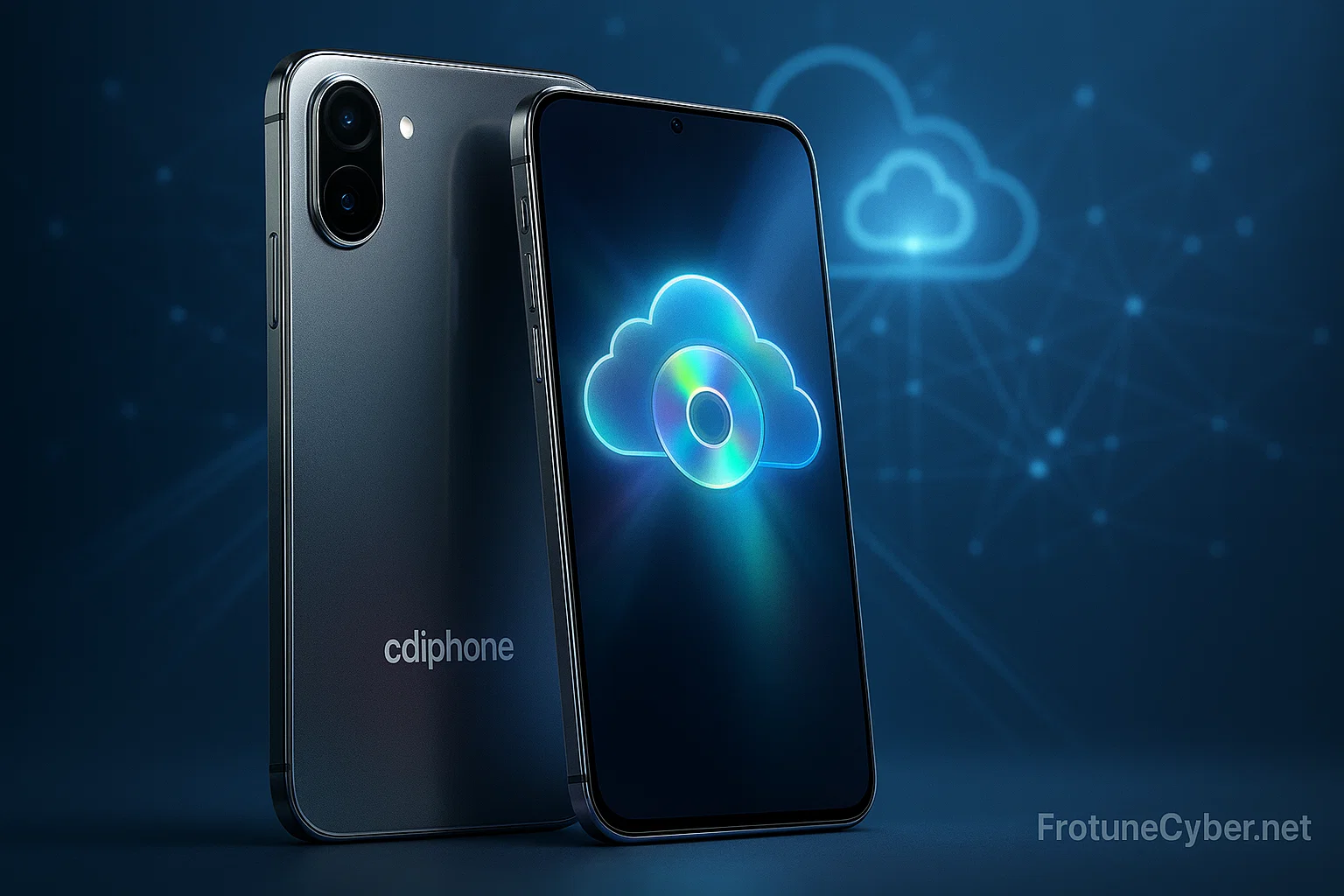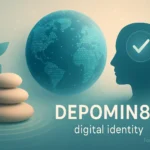When I first heard about the term “cdiphone”, I wasn’t sure whether it was a real product or just another tech buzzword floating around the internet. After spending hours diving into articles, tech forums, and concept pages, I realized that cdiphone isn’t an official Apple product (at least not yet). Instead, it’s a concept — a forward-looking idea that blends compact-disc-style storage or “cloud-driven” architecture into an iPhone-like ecosystem. This means we’re talking about something much bigger than just a smartphone — it’s a vision for hybrid data technology that could change how we think about storage, performance, and mobility.
From a personal perspective, I’ve always been fascinated by devices that merge physical and digital worlds. The cdiphone concept reminded me of my early tech days when CDs were the symbol of permanent storage — the era when I used to burn my music albums onto discs and label them by hand. Seeing that idea merge with modern mobile technology feels both nostalgic and exciting. It tells us how innovation often loops back to our roots, bringing back old ideas in new, smarter ways.
To understand this concept in detail, let’s break it down step by step — what cdiphone really is, how it could work, its advantages, limitations, and how it compares to today’s iPhones. Along the way, I’ll share some hands-on experiences and thoughts from my work with mobile devices, cloud architecture, and data management.
What Exactly Is a cdiphone?
The term cdiphone can mean a few different things depending on how you interpret it. Some say it refers to a Compact Disc iPhone, a theoretical smartphone that includes optical or removable storage. Others believe it stands for Cloud Driven iPhone, a concept where most of the device’s functions rely on advanced cloud syncing, online storage, and AI-backed data retrieval. In both interpretations, the goal is the same — extending the storage and performance potential of the iPhone ecosystem beyond today’s limitations.
From a technical viewpoint, a cdiphone might use tiered storage architecture — combining flash memory (for fast, local operations), disc-based or archival storage (for long-term data), and cloud-based storage (for remote access and backup). This hybrid approach could give users the best of all worlds: speed, safety, and scalability. It also tackles one of today’s biggest smartphone issues — limited local storage capacity despite increasing file sizes and app demands.
As someone who’s worked with backup and cloud infrastructure, I find this model very logical. It mirrors the structure of enterprise servers — where data is intelligently distributed between fast-access memory and deep, long-term storage. Applying that to a mobile phone feels like a natural next step in the evolution of personal technology.
The Idea Behind cdiphone: A Reaction to Modern Data Problems
Every big invention starts with a problem. The cdiphone idea was born out of the growing challenge of managing digital content on mobile devices. As camera quality increases and apps become heavier, users keep running into “Storage Almost Full” notifications. It’s frustrating, especially when you’re shooting 4K videos or storing large design files. The cdiphone model promises to solve that through multi-layer storage — combining local, removable, and cloud tiers.
Another key reason for its emergence is data permanence. Cloud storage, while convenient, isn’t always fully reliable. Accounts can get locked, and connectivity issues can cause delays. A physical or semi-physical medium like a micro disc gives users a sense of control and security. In my own workflow, I always keep both cloud backups and local drives for redundancy — because no single system is perfect.
Finally, there’s also a sentimental angle to cdiphone. It revives the concept of “owning” your data physically, much like when we owned our music on CDs. For a generation that grew up in the cloud, that’s an appealing contrast — the ability to hold onto something tangible again, without losing digital flexibility.
Core Features and Capabilities of cdiphone
The strength of the cdiphone lies in its architecture. It’s designed to create a balanced ecosystem between speed, capacity, and accessibility. Imagine having three distinct storage layers working together seamlessly:
- Flash Memory (Primary): For operating system and daily apps.
- Disc Module (Secondary): For long-term, archival storage.
- Cloud Storage (Tertiary): For global access, sharing, and backups.
Such an ecosystem means you can stream large files from the cloud, archive rarely-used data to disc, and keep active tasks on flash memory. This not only reduces the need for expensive high-capacity phones but also extends device life and flexibility.
I’ve seen similar systems used in hybrid laptops and enterprise servers, and they work beautifully when managed properly. If Apple or another manufacturer implements it efficiently, cdiphone could redefine what we expect from smartphones. Imagine a phone that stores decades of data without ever slowing down or running out of space — that’s what this idea aims for.
How cdiphone Could Change Everyday Use
If cdiphone becomes a reality, it would impact not just how we use phones but how we think about digital ownership. Right now, your phone’s storage is static — when it fills up, your only options are deleting files or paying for iCloud. But in a cdiphone scenario, you could easily offload your old projects, media, or backups to another tier without losing access.
For example, as a content creator, I often work with high-resolution videos and photos. If I had a cdiphone, I could store current projects in flash memory, archive completed ones onto the disc tier, and keep backups synced to the cloud. That means I’d never have to juggle files or worry about “insufficient storage.” It’s efficiency and peace of mind rolled into one.
This also opens possibilities for offline reliability. Cloud systems depend on connectivity — but with a hybrid model, you could still access everything offline, whether it’s stored on flash or disc. That’s huge for travelers, remote workers, or anyone in areas with poor internet.
Technical and Engineering Challenges
Of course, this vision isn’t without obstacles. The most obvious challenge is hardware integration. How do you fit a disc-like mechanism inside a thin iPhone body? Traditional optical drives are too bulky and power-hungry. Engineers would need to reinvent disc technology — perhaps with micro-optical or solid holographic storage layers that can fit inside a compact shell.
Another big issue is power management. More hardware means higher energy consumption. For cdiphone to work efficiently, it would need an intelligent system that powers down unused modules to conserve battery life. I’ve seen similar solutions in hybrid laptops where secondary drives sleep until needed — the same principle could apply here.
Finally, there’s software synchronization. Managing three storage layers isn’t easy. The OS must be smart enough to predict user behavior — deciding when to move data between flash, disc, and cloud without delays or confusion. Apple’s AI capabilities and machine learning frameworks would be crucial for this.
Comparing cdiphone with Standard iPhone
To visualize the difference, let’s compare the two concepts side by side:
| Feature | Standard iPhone | cdiphone Concept |
|---|---|---|
| Storage | Fixed Flash Memory | Tiered (Flash + Disc + Cloud) |
| Cloud Dependency | High | Balanced (Local + Cloud) |
| Upgrade Flexibility | Limited | Modular & Scalable |
| Data Redundancy | Cloud Backup Only | Multi-Layer Redundancy |
| Power Efficiency | Optimized | Variable (Depends on Design) |
| Customization | Software Only | Hardware + Software Hybrid |
From experience, I can tell you that modular systems like cdiphone are far more flexible but harder to maintain. They cater to advanced users — creators, professionals, or enterprises — rather than casual consumers. But that’s often how innovation begins: niche products that eventually influence mainstream design.
Real-World Applications and Use Cases
The cdiphone would shine in specific contexts.
1. Content Creation: Photographers, filmmakers, and designers could archive terabytes of content without carrying external drives.
2. Enterprise Field Use: Businesses could deploy custom cdiphones preloaded with secure modules and offline data for field agents or inspectors.
3. Education and Research: Universities could use them for storing offline databases, student media projects, or large digital archives.
Personally, I can see the cdiphone transforming how I handle long-term storage. Instead of using separate SSDs and cloud folders, I’d have everything integrated within my phone. It would mean less clutter, fewer devices to carry, and smoother collaboration across platforms.
Even in developing regions where cloud access is limited, this kind of hybrid storage could empower users to store and share large files without relying entirely on internet infrastructure — bridging the digital divide in a very practical way.
Expert Insight: Why the Concept Feels So Relevant Now
After working for years with storage optimization and mobile integration systems, I can say this with confidence: the timing is perfect for something like cdiphone. Data volumes are exploding, yet physical storage isn’t scaling fast enough. Users want faster devices, but they also want reliability and control. A layered model like this addresses both.
Another reason it feels right is the shift toward decentralized storage — where users hold more control over their data. With privacy concerns on the rise, storing everything in the cloud isn’t ideal. A cdiphone could give users a personal data vault, backed up by the cloud but not dependent on it.
Lastly, innovation always happens where convenience meets necessity. cdiphone represents that point — it’s a creative solution born from the frustration of limited phone storage and rising data needs. Whether it takes the form of optical storage, modular chips, or advanced hybrid flash, the philosophy behind it is sound.
The Future Vision: cdiphone and Beyond
If this idea matures, we might see phones with modular bays, letting users swap small data cartridges like modern micro-discs or even holographic memory plates. Over time, these modules could replace cloud dependence entirely, creating a distributed network of user-owned data.
In a decade, cdiphone-like technology could merge with AI-driven storage allocation, where your phone predicts what you’ll need and loads it automatically. It might even sync seamlessly with laptops, smart TVs, and AR headsets — making your phone the “brain” of your digital ecosystem.
When I picture the future of mobile computing, I see cdiphone as a symbol — not of nostalgia, but of balance. A device that respects both local autonomy and cloud convenience. That’s what true digital freedom looks like.
Read More: Quikernews.com: A New Era of Fast and Reliable News
Final Thoughts
The cdiphone might still be an emerging idea, but it represents something profound — a shift in how we think about storage, ownership, and connectivity. It’s about reimagining the smartphone not as a closed device but as an adaptable, expandable hub that grows with us.
From my years of working with tech ecosystems, I’ve learned that great innovations don’t always arrive fully formed. They start as bold ideas that challenge norms. The cdiphone, whether real or conceptual, challenges our dependence on limited local memory and over-reliance on cloud platforms. It offers a bridge — a hybrid future where data is both accessible and secure.
If companies take this concept seriously, we could see the next generation of smart devices become far more human — flexible, enduring, and built around how we actually live and create.

